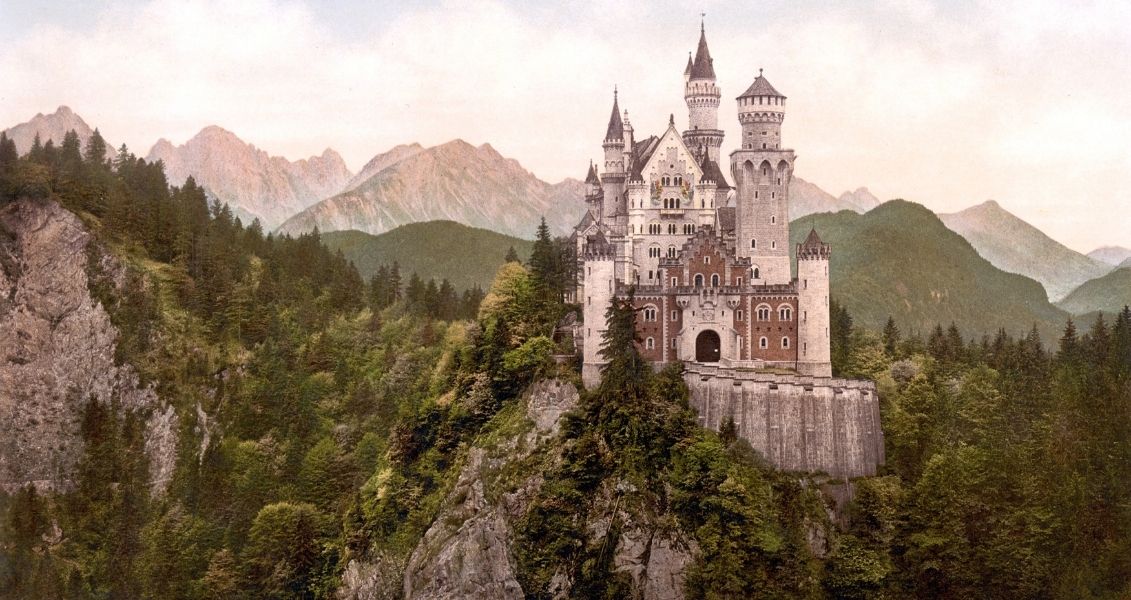International Day of Monuments and Historical Places
What day is it?
It is impossible to imagine Kyiv without Hagia Sophia, India without the Taj Mahal, and the USA without the Grand Canyon. Such areas and buildings testify to the historical and natural uniqueness, therefore they have the value of cultural heritage. Even the most experienced travelers get unforgettable impressions from their beauty, grandeur and diversity. A day is dedicated to such places and buildings, which forces all concerned people to pay attention to the need to preserve these culturally and historically important objects. It International Day of Monuments and Historical Placesalso known as World Heritage Daywhich is celebrated every year on April 18.
How did the idea to celebrate the International Day of Monuments and Historical Places come about?
There is an incredible number of historically and culturally important places and monuments in the world. Among them, three categories are distinguished: cultural, natural and mixed. Cultural heritage includes ancient houses, significant archaeological buildings and works of monumental sculpture or painting. Natural heritage is considered to be natural areas characterized by value due to their beauty or uniqueness. The combination of cultural and natural elements in one object refers it to the mixed category.
Understanding the value of historical monuments, especially those belonging to ancient times, began in the Renaissance. In the 18th century, during the Great French Revolution, material cultural values of France were declared national property, and a special state service was created to protect them. Soon, similar state bodies were established in other European countries.
Destruction of historical monuments
Military actions often became the reason for the loss of important historical monuments. The destruction of such objects during the war could be accidental, but often there was a deliberate destruction of the enemy’s material cultural heritage for the purpose of demoralization, humiliation of values, religious or cultural symbols. It is usually difficult to determine whether such actions were accidental or intentional.
The first legal principles for the protection of historical monuments appeared in the Hague Conventions of 1899 and 1907, which regulated the order of military operations. In particular, it was determined that buildings housing art, science and charity institutions, as well as temples and historical monuments, should not serve as targets for shelling during the war.
In 1935, the International Treaty on the Protection of Artistic and Scientific Institutions and Historical Monuments was signed in Washington. This treaty declared the priority of cultural objects over military expediency. This agreement is also called the Washington Pact, or the Roerich Pact, because it was initiated by Mykola Roerich, a famous philosopher, artist and public figure, since 1928.
In 1954, the Hague Convention on the Protection of Cultural Property in Cases of Armed Conflict was adopted, which expressly prohibited the deliberate destruction of historically significant objects. The reason for the adoption of this document was the large-scale destruction caused by the Second World War. One example is the German city of Dresden, known for its cultural and historical buildings that were destroyed or damaged by British and American aircraft.
Unfortunately, even in our time, the warring parties do not always comply with international agreements regarding the preservation of cultural monuments. For example, during the Syrian conflict in 2014-2015, the bombing of Aleppo destroyed or damaged 70% of the ancient city’s buildings, many of which are UNESCO World Heritage Sites.
However, the destruction during armed conflicts is only a small part of the reasons for the loss of objects of world historical heritage. Far more significant and long-lasting are the devastation caused by urban development, mining, climate change, natural disasters, and even tourism. Often, people who visit this or that historical place try to tear off a piece of the structure to take it with them, constantly pollute the territory with garbage, scare away animals and trample unique vegetation.
The world’s largest archaeological rescue operation
The construction of the Aswan Dam became the impetus for joint efforts in the protection of the world’s natural and cultural heritage. In 1959, the governments of the then OAR and Sudan appealed to UNESCO for help in saving the ancient Nubian monuments, which were threatened by flooding by a large lake that was to be formed as a result of the construction of a dam. UNESCO responded with a call to the international community, which resulted in the world’s largest archaeological rescue operation – almost all of Nubia’s significant temples and shrines were saved by being moved to a safe location.
In 1966, a catastrophic flood came to Venice, so the attention of the whole world was focused on the threat to the historical monuments of this city. The Italian government, together with UNESCO, developed a long-term program for the preservation and restoration of ancient Venetian buildings, but the need to create a single international mechanism for solving similar situations became increasingly clear.
Convention on the protection of the world’s natural and cultural heritage
The Convention on the Protection of the World Natural and Cultural Heritage, adopted by UNESCO in 1972, became such a mechanism. The document entered into force in 1975, after its ratification by 20 countries, and provided a basis for international cooperation in the preservation and protection of historical places and monuments around the world.
In 1978, UNESCO launched the World Heritage List, which included the first 12 sites, including the Galapagos Islands, Yellowstone National Park, and Aachen Cathedral. Today, there are more than a thousand objects located in different parts of the world. However, it also happens that due to modern urbanization or poaching, UNESCO excludes some objects from this list, such as the Dresden Elbe Valley or the oryx antelope reserve in Oman.
International Day of Monuments and Historic Places in History
-
1931The International Conference on the Restoration of Historical Monuments, organized by the International Bureau of Museums, was held in Athens.
-
1957The first International Congress of Architects and Specialists in Ancient Buildings was held in Paris.
-
1964The Venice Charter was adopted, which fixed the standards of preservation and restoration of monuments and historical places.
-
1965The International Council for the Protection of Monuments and Historic Sites was established within the framework of UNESCO.
-
1982
April 18At a symposium in Tunisia organized by the International Council for the Preservation of Monuments and Historic Sites, a proposal was made to establish a world holiday to highlight the importance of world material heritage. -
1983At the UNESCO General Assembly, April 18 was declared the International Day of Monuments and Historic Sites.
Frequent Questions and answers on the International Day of Monuments and Historical Places
This list includes 1,121 sights on the territory of 167 countries (869 of them are cultural, 213 are natural, 39 are mixed).
The largest number of such objects is in Italy and China — 55 monuments in both countries. These include the Great Wall of China, the Forbidden City in Beijing, the historic centers of Rome and Florence, the Amalfi Coast and many others.
Our country is known in the world for St. Sophia Cathedral and Kyiv-Pechersk Lavra, the historical center of Lviv, the Struve Arch, the Carpathian beech forests, the Residence of the Metropolitans of Bukovyna and Dalmatia (now the building of the Chernivtsi National University), the wooden churches of the Carpathians, and the ancient city of Chersonesos.
Such an object is a large part of the French Bordeaux – 1,100 hectares of the city’s territory was included in the UNESCO World Heritage List in 2007.
The top three such cultural objects include the Seine embankment in Paris, the historic center of Rome and the Tower of London.
How to celebrate the International Day of Monuments and Historical Places?
Every year on April 18, the International Council for the Preservation of Monuments and Historic Sites, as well as local organizations, hold conferences, online lectures, interviews with experts and other educational events. A certain theme is also proposed, which becomes the main theme for all festive events. For example, in 2020, the theme sounded like “Common cultures, common heritage, common responsibility”, that is, it expressed global unity in the face of modern world problems.
It is wonderful if on this day there is an opportunity to visit an interesting historical monument in your own country or abroad. If not, you can arrange a virtual tour without leaving your home. For example, thanks to the Google Arts & Culture resource, it is easy to get free access to a number of cultural heritage sites around the world.
It is worth spreading information about this holiday on social networks, as well as sharing your own travel videos and interesting facts about famous historical monuments.
Why is this event important?
There is an opinion that it is easier, cheaper and more profitable to build a new building than to preserve and restore the old one. But in fact, there are many reasons for preserving cultural heritage sites, and they are valuable to people for both spiritual and practical reasons.
First of all, historical monuments play an important cultural role. Old buildings can tell people about events that took place long before they were born, and also inspire pride in the rich spiritual and heroic past of their native country. Famous architectural structures become symbols of big cities, such as the Eiffel Tower in Paris or Big Ben in London. Such sights give unique character and special charm to different corners of our planet.
The economic aspect is also important, because historical places are loved by tourists. The tourism industry brings income to the state, and provides jobs for a certain number of local residents. In case of restoration and restoration of monuments, jobs are also created for experts and restorers.
Unfortunately, architectural monuments and historically significant places are not always preserved by people in good condition, and sometimes they are simply destroyed in a barbaric manner. These destructions are not measured purely by material damages, because they are the loss of part of the national memory and spirituality. Therefore, preserving historical objects for future generations is the sacred duty of every person.
When will we celebrate International day of monuments and historical places?
| Year | Date | Weekday |
|---|---|---|
| 2021 | April 18 | Sunday |
| 2022 | April 18 | Monday |
| 2023 | April 18 | Tuesday |
| 2024 | April 18 | Thursday |
| 2025 | April 18 | Friday |



































